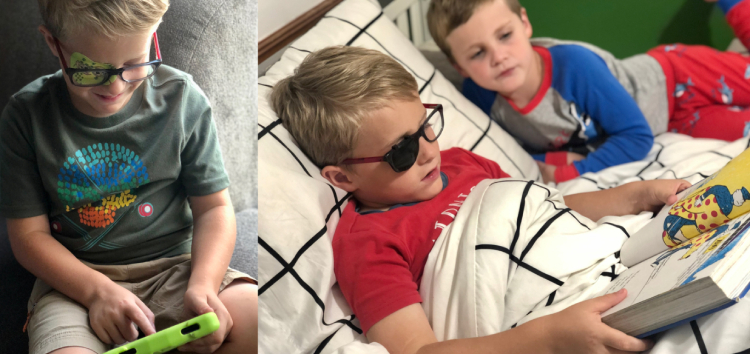
Your child just had their annual eye exam, and the doctor states they have Amblyopia. Sounds scary, right? It doesn’t have to be!
Amblyopia, sometimes referred to as Lazy Eye, is actually more common than you may realize! Two to three out of every hundred kids are diagnosed with Amblyopia. If it is caught early enough, it can usually be corrected. However, if left untreated it can cause permanent vision impairment and issues with depth perception. The most success is seen in children who started treatment before the age of 7. (Hint, hint… give us a call to get your kids scheduled!)
There are a few different kinds of Amblyopia:
- Refractive- in this type, the child has one eye that is stronger than the other, with better focusing ability, and the brain chooses to only use the stronger eye. In doing so, the weak eye does not develop appropriately. There are no “symptoms” to this condition, and is often not discovered until the child has a vision exam. (We can see your littles at as young as 6 months of age!)
- Strabismic- in this type, the child has one eye (or both) that are not aligned properly, and may turn slightly outward or inward instead of straight forward.
- Deprivation- this type is caused by cataracts, which are quite rare in children.
Since the symptoms of Amblyopia are often very slight, children tend to not even realize there is an issue at all! Parents, or sometimes teachers, may notice things like eyes drifting from center, squinting, covering one eye, or tilting/turning of the head in an attempt to see better.
With all types of Amblyopia, patching is considered the “gold standard” if you will. It is often the first method that is used for correction. For more difficult or advanced cases, surgery may be an option.
Patching in itself can be a hassle for some parents- kids naturally don’t care to be told that they HAVE to do something, however- you can make it fun! There are a lot of options for patches, brightly colored stick on patches with characters, clip on patches that attach directly to the glasses, “pirate patches” and more! We carry multiple options here in the office too!
The average recommended time is 2 hours or more a day of patching, which often feels like a lot to a kid. Allowing them to do something like play on an Ipad or tablet during their patching time, play a video game, or read a favorite book to a parent/sibling is not only fun, but also the perfect thing to do while patching!
Games that require the child to follow something with their eyes and focus are terrific options- here are some great examples:
- Avoid the Dots (https://apps.apple.com/us/app/avoid-the-dots/id1056909663)
- The Line Zen (https://apps.apple.com/us/app/the-line-zen-free/id1103942440)
As always, if you have questions or concerns regarding your child’s eyes, we are here to help!
